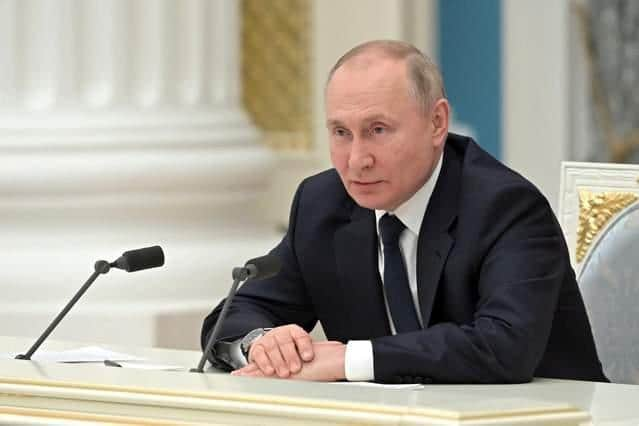Finland and Sweden NATO moves show how Putin shot himself in the foot - David Hobbs
His plan to disrupt Ukraine’s long-term quest for NATO membership has brought about the imminent membership of hitherto neutral Finland and Sweden. Instead of stalling NATO enlargement, he has accelerated it.
The applications have been in the making for a while, and President Putin has already been sabre-rattling in the Baltic region and issuing dark threats, including about new nuclear deployments.
Advertisement
Hide AdAdvertisement
Hide AdFinland, Sweden, and NATO’s members have also been preparing a transition strategy to deter more aggressive actions in the period before Finland and Sweden become full NATO members, covered by the mutual defence commitment, spelt out in “Article 5” of the NATO Treaty.


Hence the recent flurry of statements and agreements about defending Finland and Sweden. It is hoped that these will serve as a sort of interim Article 5 until the real thing clicks in, hopefully within a few months.
Yet just a few days ago, at the CSTO, an alliance of six former Soviet republics, President Putin gave a surprisingly measured assessment of Finland and Sweden’s prospective NATO membership, saying that there is “no direct threat to Russia in connection with NATO’s expansion to these countries” and that Russia’s response would depend upon what military infrastructure NATO placed there.
He is also well aware that NATO’s “footprint” in the new members will be minimal. It was in all the countries which joined the Alliance after the end of the Cold War, until Russia occupied Ukraine’s Crimea and parts of the Donbas in 2014. Even now, NATO’s reinforcements to its most exposed members pose no threat to Russia’s security: they are intended only to deter a Russian offensive and mount a defence if that fails.
Advertisement
Hide AdAdvertisement
Hide AdIn other words, although he must feel angry and aggrieved by Finland and Sweden’s applications to join NATO, President Putin knows that he has nothing to fear from them.
But why, then, is he so afraid about Ukraine seeking membership of NATO and even the European Union?
His fear has little or nothing to do with military forces, but a great deal to do with how NATO and EU countries are governed.
It is not just a nation’s armed forces which join NATO: it is the entire nation. To qualify, that nation must subscribe to the Alliance’s shared values – notably democracy, individual liberty, and the rule of law – and meet key political and economic criteria, in addition to being able to contribute to NATO operations.
Advertisement
Hide AdAdvertisement
Hide AdAll the countries that joined the Alliance after the end of the Cold War took years to tick all the boxes, but that will not be the case with Finland and Sweden. As members of the European Union, those boxes – and many more besides – are already ticked.
But while the governance of Finland and Sweden matters little to President Putin, the governance of Ukraine matters a lot. He has seen any number of “strongman” regimes toppled by popular uprisings, which he believes were fuelled by the West, but he was especially shaken by Ukraine’s 2014 “Revolution of Dignity” which ejected then-President Viktor Yanukovych.
And the last thing that President Putin wants is a well-run, democratic regime in Ukraine – a sharp contrast with his own corrupt kleptocracy – and he will go to almost any lengths to thwart it.
Quite simply, he sees a successful Ukraine as a threat to his regime’s survival, a model that the Russian people might find tempting, particularly given the deep and extensive historical and cultural connections between the two nations.
Advertisement
Hide AdAdvertisement
Hide AdPresident Putin might still lash out over Finland and Sweden’s NATO applications, and he will certainly demonstrate his displeasure about it. Even though he knows that NATO enlargement is not a threat, it offends his distorted interpretation of history and heightens his misplaced sense of grievance against the West.
But for President Putin, the stakes in Ukraine are far higher, so he will not stop trying to undermine Ukraine’s government and statehood. And he will be determined to keep Russian forces in parts of Ukraine to maintain the fiction that these harbour “breakaway” regimes that need protection from Ukraine’s government.
Unfortunately, that means that the more he is backed into a corner, the more dangerous he will become. The worst of this conflict could be yet to come.
- Mr Hobbs is ex-Secretary General of NATO Parliamentary Assembly and now CEO of the Atlantic Treaty Association of the United Kingdom.